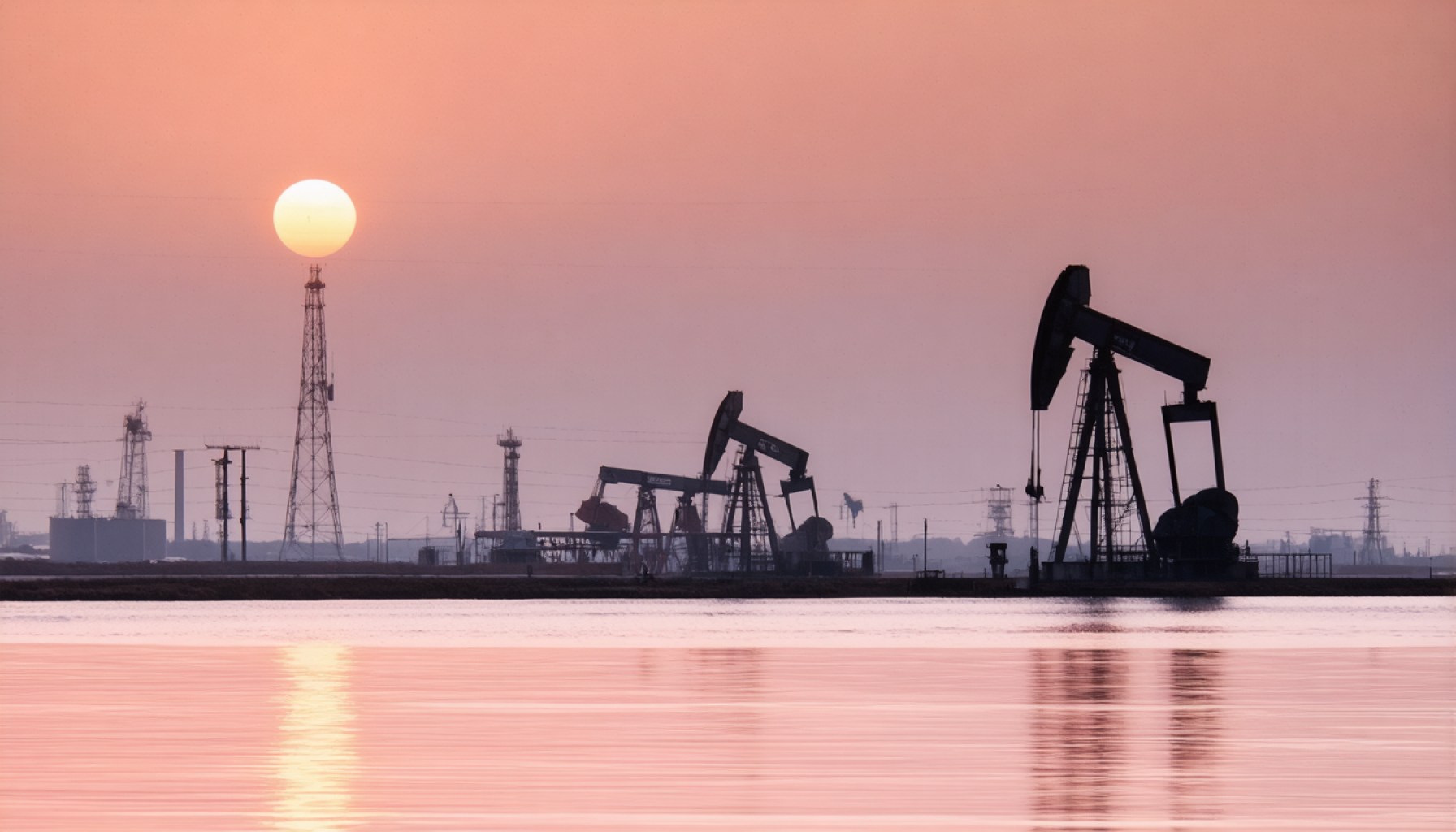- The global energy landscape is caught between rising oil and gas demand and the push for renewables.
- Oil industry investment needs to increase by 30%, with $660 billion annually required to sustain production due to declining mature fields.
- Energy demand is projected to reach nearly 110 million barrels per day by the end of the decade, driven by population growth and rising middle classes.
- The green energy transition is slow, hindered by inflationary pressures and the focus on energy security over carbon-zero goals.
- Oil remains crucial to bridging the demand-supply gap until renewable energy solutions can become fully viable.
- Despite the push for renewables, economic pragmatism favors continued reliance on oil for the foreseeable future.
A profound conundrum faces the energy world, as the ancient rhythm of oil and gas consumption dances in tandem with renewable ambitions. Despite green energy’s hopeful march forward, the reality remains that the world still runs largely on traditional fuels. The industry’s pulse quickens as global demand persistently nudges upwards, revealing a staggering shortfall in current investment levels.
The renowned energy insights firm, Wood Mackenzie, paints a stark picture—crude oil beckons for an annual $660 billion injection, a hefty 30% increase from today’s figures. This fiscal boost serves as a lifeline for an industry strained by mature fields slowly retreating from their zenith, struggling to quench an insatiable global thirst.
Energy giant Vitol capitalizes on this momentum, confidently projecting oil demand to crest at nearly 110 million barrels per day by decade’s end. While optimism from organizations like the International Energy Agency predicts an imminent peak, industry stakeholders envision demand lingering robustly into the mid-2030s.
Yet, amid these forecasts, the scent of change lingers. Population growth and swelling middle classes inflate the need for petrochemicals and jet fuel, underlining an unexpected twist—the green transition, though earnest, unfolds slowly. Inflationary pressures and fiscal restraint further divert focus from costly carbon-zero goals towards maintaining energy security.
The takeaway rings clear: oil must bridge the demand-supply gap until renewables can fully shine. The global energy stage evolves under careful watch, yet for now, old habits persist. Economic pragmatism tips the scales towards oil, reflecting a pivotal truth—energy remains a multifaceted puzzle, awaiting innovation’s ultimate triumph.
Will Oil and Renewables Ever Strike a Balance on the Global Energy Stage?
How-To Steps & Life Hacks
1. Diversifying Energy Investments:
– Mix investments between oil and renewables to balance risk and potential future returns.
– Monitor regulatory changes and incentives for renewable energy projects.
2. Energy Consumption Reduction:
– Implement energy-efficient practices in daily life to reduce dependence on traditional fuels.
– Install solar panels or invest in smart home technologies to trim down energy costs and reliance.
3. Career Development in Energy Sector:
– Develop skills in both fossil fuel management and renewable technology advancements to remain relevant.
– Pursue courses in energy transition management and sustainable energy systems.
Market Forecasts & Industry Trends
– Oil Demand: According to Vitol, oil demand is expected to peak at 110 million barrels per day by the end of the decade. However, this demand could persist well into the mid-2030s despite green initiatives, as suggested by industry stakeholders.
– Renewables Growth: The International Energy Agency (IEA) forecasts a significant increase in renewable energy capacity, but acknowledges a slower transition pace due to economic and technological constraints.
Real-World Use Cases
– Energy Security: Countries are diversifying energy sources to ensure energy security amid fluctuating oil markets.
– Hybrid Energy Systems: Companies are adopting hybrid systems combining solar, wind, and traditional fuels to optimize energy production and reliability.
Reviews & Comparisons
– Oil vs. Renewables: Oil remains dominant due to established infrastructure and existing market needs. In contrast, renewables face challenges like high initial investment costs and energy storage solutions.
– Hybrid Vehicles: Compared to electric vehicles, hybrids still rely on oil but offer a transitional solution by reducing emissions.
Controversies & Limitations
– Environmental Impact: Oil extraction and consumption contribute significantly to greenhouse gas emissions and climate change.
– Green Transition Hurdles: Economic and political factors often result in slower adoption of renewable technologies, causing tension between environmental goals and economic pragmatism.
Features, Specs & Pricing
– Oil Pricing: As of recent forecasts, the ongoing investments request is $660 billion annually to maintain supply levels, driven by infrastructure costs and decreasing output from mature fields.
– Renewable Energy Costs: While initially high, renewable energy costs are decreasing due to technological advancements and government subsidies.
Security & Sustainability
– Fossil Fuels: Traditional fuels are susceptible to geopolitical tensions, affecting supply lines and pricing stability.
– Renewables: Renewable energy sources are more sustainable but require advancements in technology and storage solutions to improve reliability.
Insights & Predictions
– Transition Timeline: A significant shift towards renewables may not occur until the 2040s unless breakthrough innovations accelerate the process.
– Investment Trends: Investors are advised to maintain a balanced approach, acknowledging immediate oil needs while supporting long-term renewable growth.
Pros & Cons Overview
Oil:
– Pros: Established infrastructure, energy-dense, immediate supply needs met.
– Cons: Environmental concerns, finite resource, subject to market volatility.
Renewables:
– Pros: Sustainable, reducing costs, government incentives.
– Cons: High initial cost, storage and reliability challenges, slow transition.
Actionable Recommendations
– Immediate Steps: Reduce personal fossil fuel dependency by using energy-efficient appliances and supporting policies promoting sustainable energy sources.
– Long-term Planning: Consider investing in or upskilling towards emerging technologies in renewable energy sectors.
For more information, visit Wood Mackenzie or International Energy Agency.
